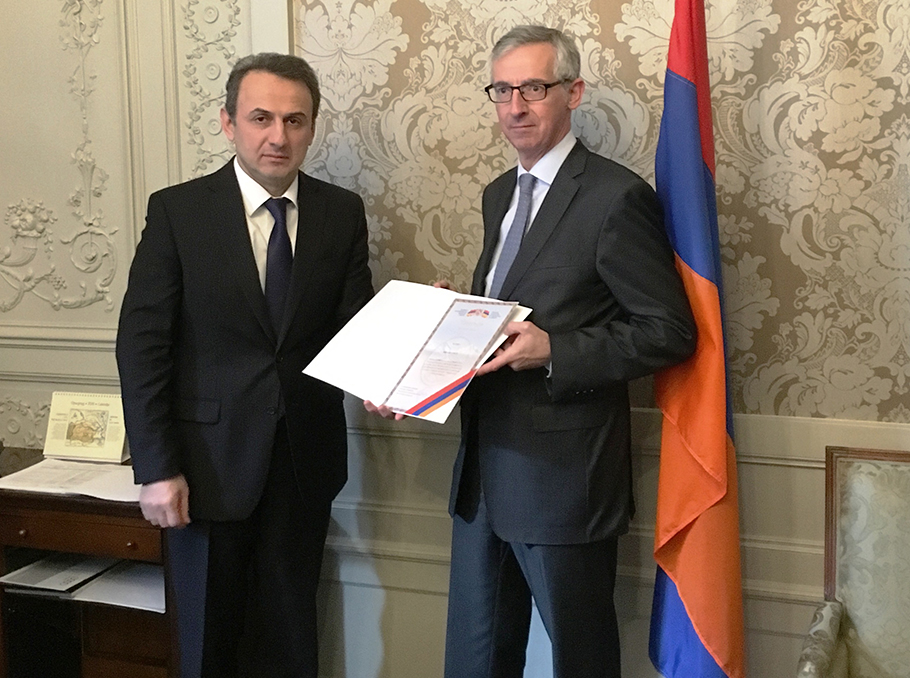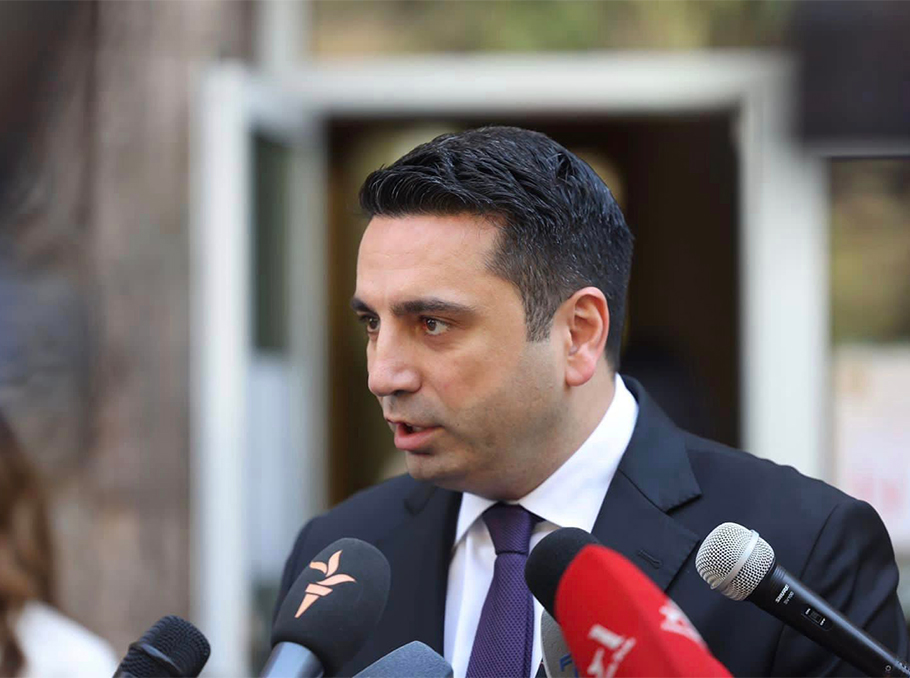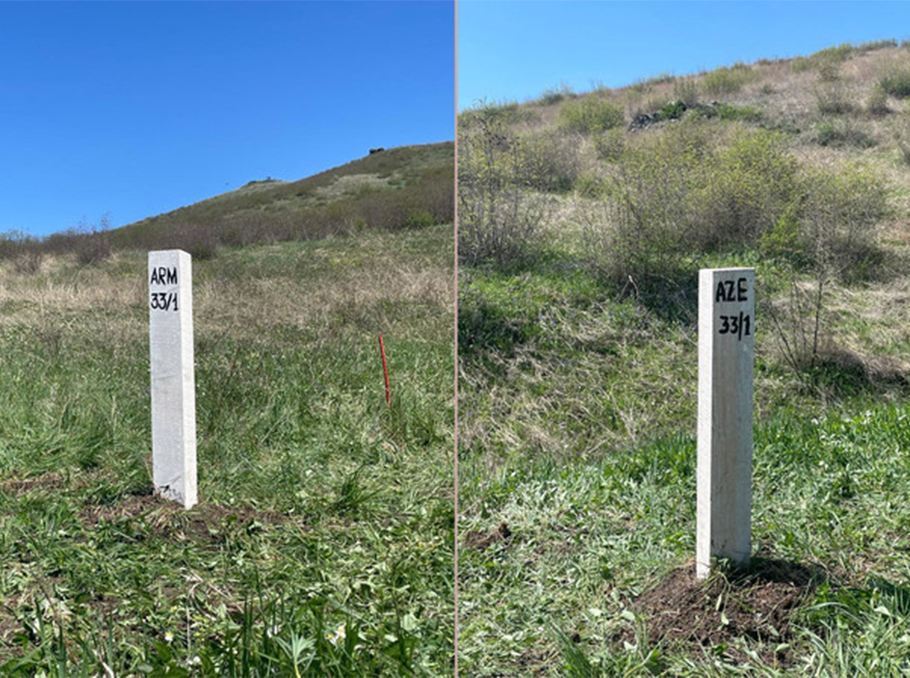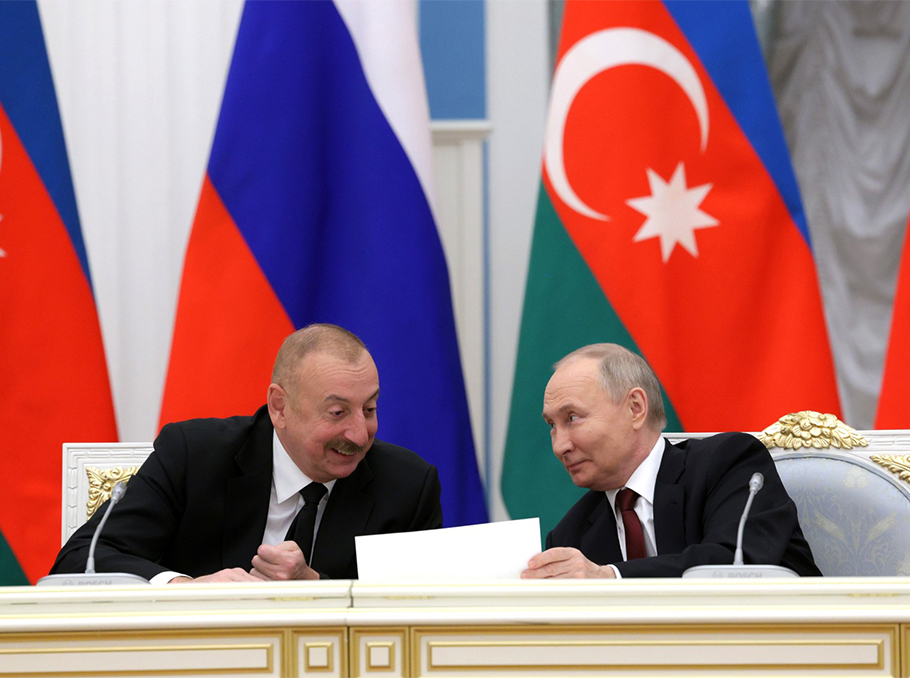Professor at the UCL (Université catholique de Louvain) Bernard Coulie tells about his 30-year chase after Armenian manuscripts.
“I am a scholar at the University, and I am professor of Armenian studies at the Louvain University at Belgium. Armenian studies mean mainly ancient literature, ancient history ancient language. I am teaching Grabar and I am teaching my students to work on ancient and medieval Armenian texts. My interest was raised because I first graduated in classical studies - Greek and Latin. I studied ancient Greek and Latin, and then I moved to all the languages of the Near East, especially Armenian, Georgian, Byzantine and Greek, and I also graduated Oriental studies.
I am a philologist; I am interested in text, the language of the text, the content and the historical environment of the text, but of course, also in the material of the text, i.e. the manuscripts. All the text I am studying reached us on manuscripts, like the ones that are kept in the Matenadaran, but the Armenian manuscripts are all over the world, not only in the Matenadaran. That is why I became interested in looking for Armenian manuscripts, because this is the basic material for my studies.
As a scholar, my research topic is Armenian translations of ancient Greek texts, especially Christian text. I am editing, producing printed editions with translations and commentaries of the text that I have translated into Armenian. These texts were written in the 5th-7th century but they come from Greek background – i.e. texts that are originally written in Greek and then translated into Armenian.
I am interested in these texts, because when Armenia adopted Christianity (you know the story of Gregory the Illuminator), it started to try to acquire the culture of the Greek and the Roman neighbors, which is the Western culture. Then, Armenia started to translate into Armenian many texts coming from Greek origin, starting with the Bible, Testaments, Gospels, also patristic literature. I am interested in the way the Armenians develop their cultural traditions using texts translated from Greek into Armenian and how this import of texts became an intrinsic part of the Armenian tradition and culture. This is my topic, and therefore, I need to have access to these texts and look into the manuscripts.
I realized that there were manuscripts in libraries - public and private ones all over the world. Of course, a large amount of Armenian manuscripts are in Yerevan, in the Matenadaran. Everybody knows about the Mkhitarist libraries in Venice, Vienna, the Armenian patriarchate in Jerusalem. But there are many libraries - public and private, holding Armenian manuscripts. So, I decided to try to publish a list of all the places in the world holding Armenian manuscripts and giving the information about the catalog.
 Bernard Coulie
Bernard Coulie
Where the Armenian manuscripts in the world are open, what kind of manuscripts? Are there published descriptions? Is there a printed catalog of these manuscripts? Are there studies of these manuscripts? It is a bibliographic tool. It is the way to know where Armenian manuscripts are in the world. And they are absolutely everywhere in Armenia, Russia, Iran, Near East, Europe, North America, South America, Australia, South Africa, Japan, Korea, everywhere. Why? Because the Armenians are everywhere, there is a huge diaspora and the manuscripts followed the Armenians, and second, because many of these Armenian manuscripts are illustrated and they have very high artistic value, so they are very expensive. So many book collectors started to buy Armenian manuscripts for their illustrations, for the paintings that are in it. This is also why Armenian manuscripts are everywhere, even in non-Armenian libraries. People love ancient books, paintings, illustrations, and they are buying them. Many Armenian manuscripts are still purchased today at auctions, in sales.
I tried to provide the list of Armenian manuscripts all around the world. First edition of “Directory of Libraries and Catalogues of Armenian Manuscripts” was published in 1992 in French. But of course, manuscripts are still traveling. The Armenian manuscripts in the Matenadaran are there, but Matenadaran is still acquiring, so the collection of the Matenadaran is still increasing. There are manuscripts coming from all the places, gifts from people that are increasing the collection of Matenadaran. There are also manuscripts that are put on sale for auctions in New York, in Paris, in London. So, manuscripts are still circulating. So the situation is evolving all the time. This is why I decided to publish a second-edition Armenian manuscripts. Catalogues, Collections, Libraries - this time in English in order to have a broader audience. We updated the bibliography, so the second edition is much larger - it’s almost double the size of the first edition, because I discovered many new places where Armenian manuscripts are, places I didn’t know about before, like in Singapore, in Hong Kong. I am still looking for manuscripts all the time.
The first change is the language. I translated it into English because French is not an international scientific language anymore, so for my book to be useful to as many people as possible, I decided to write it in English. The second change is that I have integrated, incorporated many new places that are not listed in the former edition, because since 1992, I've always been looking for manuscripts and I discovered new collections, new libraries, especially private libraries having Armenian manuscripts.
I put these places in the list. I have other new chapters, for instance, I have chapters listing the main places where Armenian manuscripts were copied and produced during the Middle Ages. The 1992 edition was only about the current state of the Armenian manuscripts. In the second edition, I also study the issue of where these manuscripts were produced, in which monasteries. I list the main copy centers of the manuscripts in the Middle Ages, providing bibliography about these centers. The second edition is much larger than the first one. There are new places, new manuscripts, new libraries, and new chapters with the more historical content. I want my book to be an introduction to the Armenian manuscripts at large.

I have been in Armenia, the Matenadaran many times. I have been to Venice, Vienna, the Mkitarists Monastery, the Armenian Patriarchy in Jerusalem. I have visited many libraries, I am in contact with many private collectors, asking them if I could give the information, because people don’t want the audience to know about their manuscripts. I always ask for permission. I am in contact with many-many private collectors, which is a way to gain a lot of information. So, I have firsthand information on man- manuscripts and libraries, and this firsthand information is now in the second edition.
I am working all time, also looking at the bibliographies, looking through the journals, looking for the new publications. I am following the auctions in Paris, all major places where manuscripts are sold today, the catalogs of the auction places. I find it fun. It is everyday work, and I have been looking for this kind of information all the time for more than 20 years now.
Each library, each collection has its own list, catalogs, but there is no general list for all the manuscripts in the world. It should be done, it is a project that maybe I’ll try to work on using computerized tools; with computers it easier to do. The list of all the Armenian manuscripts in the world does not exist today. You have to go to the catalogs of each separate library, and this is why I want to publish my book.
Probably, I have found 34,000 manuscripts. It’s difficult to count because a manuscript is a book with binding and cover. In many collections, sometimes you only have one page or only fragments. The fragments are also counted as manuscripts. 34,000 is still a small part of what has been produced by Armenians over the centuries, because many manuscripts have been lost and destroyed during invasion, fires in monasteries, the Genocide. What has survived is 34,000 Armenian manuscripts in the world.
 Bernard Coulie and Armenian Ambassador to Belgoum Tatoul Margarian in 2016
Bernard Coulie and Armenian Ambassador to Belgoum Tatoul Margarian in 2016
Any time there is a war, monuments and libraries are destroyed or damaged. This is also the case of Karabakh war. There were manuscripts kept in Artsakh, first in the Matenadaran center in Gandzasar, but they were sent to Yerevan. There were also other manuscripts in a small museum in Stepanakert, based on my information; these manuscripts are now also in Yerevan, but I am not that sure. We also know that some churches have been destroyed by the Azeris. We are losing traces, testimonies of history. This is not specific to the Karabakh war, it’s a general phenomenon. Of course, if you look to Armenian history, there have been quite a lot of invasions, and the Genocide.
The 34,000 manuscripts are not certainly the half of what has been produced during history, it’s difficult to say, but it’s less than the half of the manuscripts produced by the Armenians in history. More than 50 percent of the cultural production of the Armenians is lost. That’s huge. That means that we have to retrace the history of the Armenians, characterize that culture based on the information we have, and the information that we have is less than half of that we could have. That’s history. It is always what we are able to tell based on the available information.
It’s a pity that Armenia did not understand that the way Azerbaijan was acquiring weapons, the support of Israel, the support of Turkey to Azerbaijan one day would happen in a new war. It was for sure. But Armenia remained without reaction and preparation, so there is a huge responsibility there. Now the consequences are that almost half of Karabakh is lost to Azerbaijan and it will never come back to Armenia, never will Azerbaijan give back the territories that it has regained. I am not that optimistic, I have to say so. The result of the war is that Armenia does not have its fate in its own hands. All is in the hands of Moscow.”
Lusine Gharibyan


























Comments
Dear visitors, You can place your opinion on the material using your Facebook account. Please, be polite and follow our simple rules: you are not allowed to make off - topic comments, place advertisements, use abusive and filthy language. The editorial staff reserves the right to moderate and delete comments in case of breach of the rules.